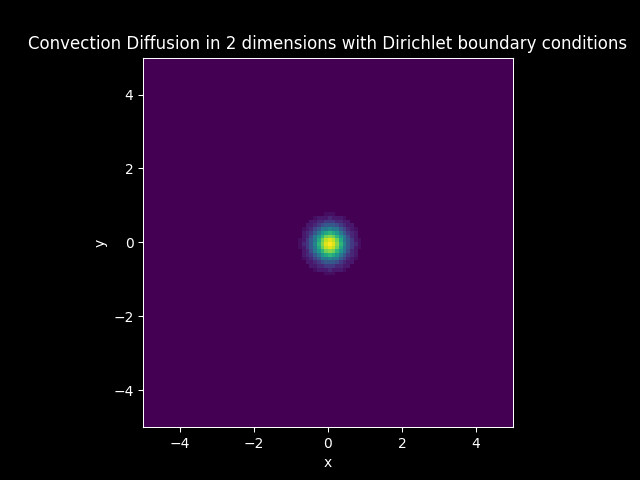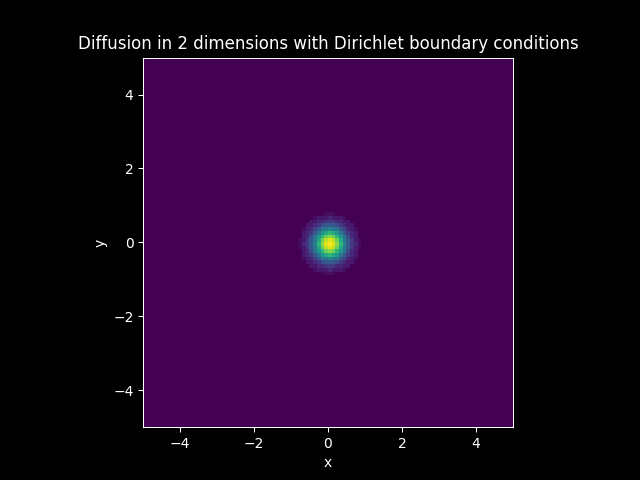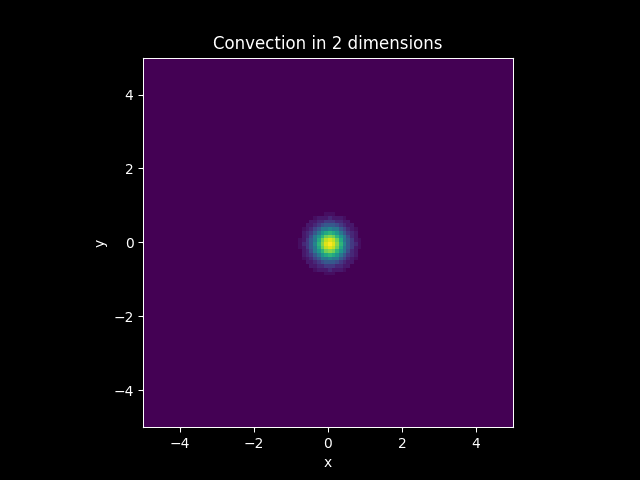The Diffusion Convection Equation is a Partial Differential Equation writen in the form:
This Equation can model most physical phenomena involving the transfer of a quantity by 'Diffusion' and 'Convection' (Advection).
-
$\nabla(D \nabla u)$ is the diffusion term. Diffusion describes the net movement of a quantity$u$ , generally from a region of higher concentration to lower concentraction. -
$\nabla \cdot (\mathbf{c} u)$ is the convection term. Convection (Advection) describes the bulk motion of a quantity$u$ under the a velocity field$\mathbf{c}$ .
Click here for more information on the Diffusion Convection Equation.
There are a number of simplifications made to this model.
-
Let the diffusion coefficient
$D$ be constant, this means it can come outside of the gradient operator resulting in the dot product of the gradients becoming the Laplacian. Hence the diffusion is written as$D \nabla^2 u$ . -
Let the convection vector field be constant, this means the convection term siplifies to
$\mathbf{c} \cdot \nabla u$ .
Suppose a model where
Suppose a model where
Consider a Diffusion Convection model in 2 dimension with the vector
Let
Solution:
Solution:
Solution:
Some applications of these models include:
-
Heat Transfer or cooling of a system.
-
Tranportation of a fluids density distribution that is flowing uniformly.
-
Fokker Plank Equation of a Stochastic Differential Equation with uniform drift and standard deviation.


